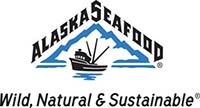The Japanese broad tapeworm (Diphyllobothrium nihonkaiense) has reportedly entered North Pacific waters and is thriving among the salmon population. That’s the conclusion of scientific researchers who identified the parasite in the musculature of a pink salmon specimen collected in Resurrection Creek near Hope, Alaska.
 Sounding the alarm bell in an article appearing in the February 2017 edition of Emerging Infectious Diseases, a journal published by the Centers for Disease Control and Prevention (CDC), the researchers wrote: “Because Pacific salmon are frequently exported unfrozen, on ice, plerocercoids may survive transport and cause human infections in areas where they are not endemic, such as China, Europe, New Zealand, and middle and eastern United States.”
Sounding the alarm bell in an article appearing in the February 2017 edition of Emerging Infectious Diseases, a journal published by the Centers for Disease Control and Prevention (CDC), the researchers wrote: “Because Pacific salmon are frequently exported unfrozen, on ice, plerocercoids may survive transport and cause human infections in areas where they are not endemic, such as China, Europe, New Zealand, and middle and eastern United States.”
For the record, it should be pointed out that Pacific salmon sourced from Alaska is not “frequently exported unfrozen.” In fact, no more than six percent of Alaska salmon is sold in so-called “fresh” form. It should also be mentioned that proper industrial freezing eliminates potential food safety threats from tapeworms or larvae.

The team of researchers, which consisted of Czech and Slovac academics assisted by a member of the Alaska Department of Fish and Game, believes its data should encourage consumers to be cautious about eating raw fish, particularly raw salmon, which has become popular in much of the developed world following the boom in sushi restaurants.
“Our main intent is to alert parasitologists and medical doctors about the potential danger of human infection with this long tapeworm resulting from consumption of infected salmon imported – on ice – from the Pacific coast of North America and elsewhere,” wrote the researchers.
ASMI Responds
 The Juneau-based Alaska Seafood Marketing Institute is actively monitoring and responding to media headlines warning about the dangers of tapeworms in salmon. In a statement issued on January 17, ASMI said “it is continuing to address inaccuracies about the threat directly to consumers, and is assuring buyers that Alaska seafood remains a high quality, nutritious and safe product.”
The Juneau-based Alaska Seafood Marketing Institute is actively monitoring and responding to media headlines warning about the dangers of tapeworms in salmon. In a statement issued on January 17, ASMI said “it is continuing to address inaccuracies about the threat directly to consumers, and is assuring buyers that Alaska seafood remains a high quality, nutritious and safe product.”
The Institute points out Alaska salmon is “among the highest quality seafood and safe for consumer consumption.” All commercially harvested Alaska seafood, which accounts for more than 60% of seafood harvested in the United States, is processed in accordance with strict Food and Drug Administration (FDA) regulations, including parasite controls. These regulations specifically guard against potential harm to ensure that eating both salmon sushi and fully cooked salmon can be safely enjoyed.
According to FDA food safety guidelines, seafood needs to be frozen to -4°F or below for seven days if it is to be consumed raw. Salmon that has not been properly frozen should be cooked thoroughly to an internal temperature of 140°F before consumption. For any raw or semi-raw preparations, the Alaska Seafood Marketing Institute always recommends using properly frozen seafood.
“The Alaska seafood industry adheres to standards that provide safe seafood products. The Alaska Department of Fish and Game works closely with the Alaska seafood industry to ensure that healthy fish are available for consumers,” said Dr. Ted Meyers, Alaska Department of Fish and Game Principal Fish Pathologist.
As only six percent of wild Alaska salmon is distributed in fresh form, the vast majority is frozen. The catch is chilled and then commercially frozen in accordance with FDA guidelines, ensuring the seafood is kept at the peak of quality, freshness and safe from bacteria and parasites.
“Alaska is proud of its heritage as a supplier of some of the highest quality and most delicious seafood in the world,” said Alexa Tonkovich, executive director of ASMI. “We go to great lengths to ensure that all of our seafood, including wild Alaska salmon, meets the highest quality standards for our consumers’ safety and enjoyment.”
About the Institute
The Alaska Seafood Marketing Institute, a partnership of the state government and the commercial seafood industry, works to promote benefits of the state’s sustainable fishery products and offer seafood industry education. Known for its wild salmon, crab and whitefish varieties, Alaska is home to dozens of different species of seafood, including more than 90% of the wild salmon harvested in the United States. From sockeye to coho, the five species of wild Alaska salmon are nutritious, low in saturated fat, and high in essential vitamins and heart-healthy omega-3 fatty acids. – Reported by John Saulnier





